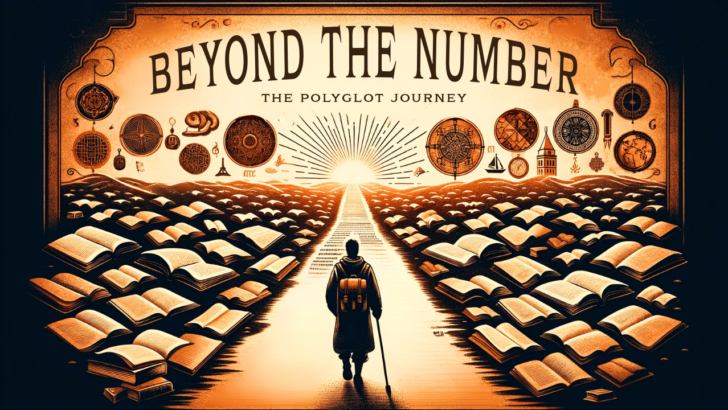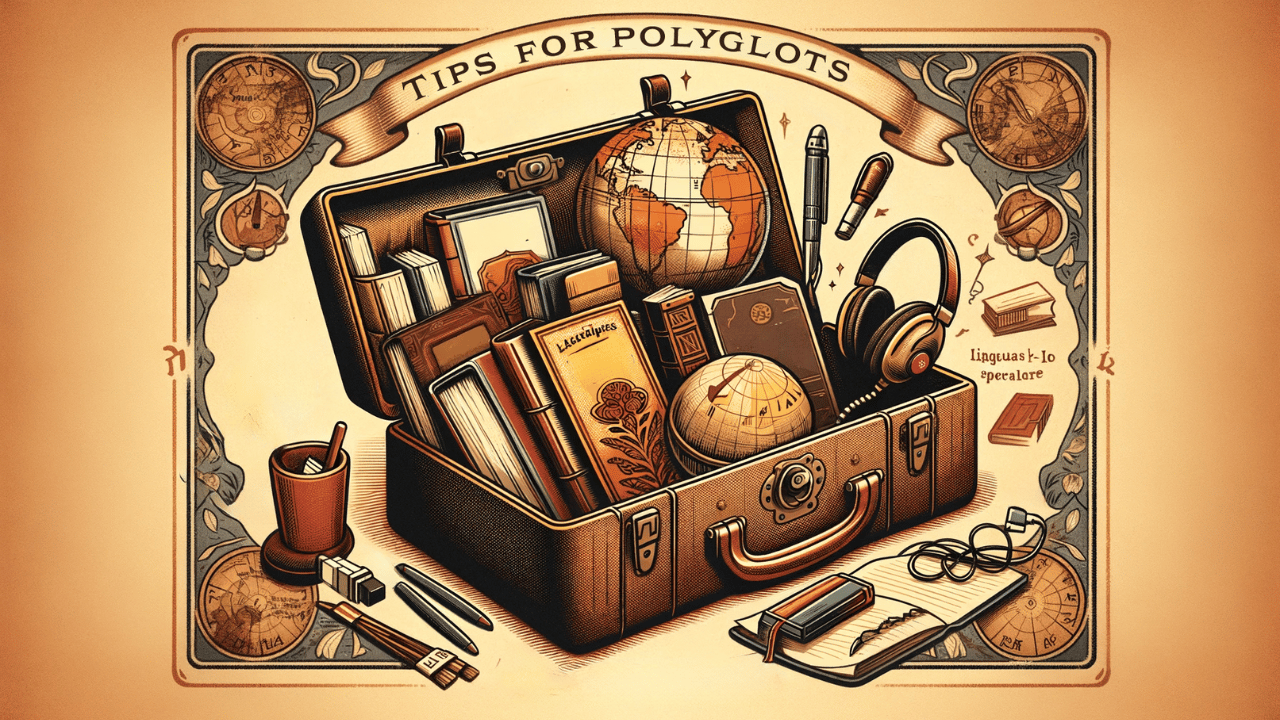In the mesmerizing world of languages, the term ‘polyglot’ stands tall, a beacon of linguistic prowess and cultural curiosity.
But what exactly elevates someone to the esteemed ranks of polyglots? Is there a specific number or linguistic threshold one must cross?
Let’s jump into the colorful and diverse universe of polyglots to discover just how many languages you need to master before you can wear the polyglot badge with pride.
The Magic Number: Is There One?
The journey to becoming a polyglot often brings us to a pivotal question: How many languages does one need to know?
While the answer might seem straightforward, it is in fact wrapped in layers of complexity and personal achievement.
Conventionally, the number four has been regarded as the gateway to polyglotism. That’s right—if you’re proficient in four languages, you’re officially in the polyglot club!
Yet, this figure isn’t carved in stone.
When consulting renowned dictionaries like Collins or Oxford, the definition of a polyglot simply refers to someone who ‘speaks or understands multiple languages’ (Collins) or ‘knows more than one language’ (Oxford Learner’s Dictionary).
This ambiguity highlights that polyglotism transcends a fixed numerical threshold.
The notion that mastering four languages marks the transition from being a language enthusiast to a polyglot is a perspective enriched by the collective experiences of language learners, polyglots, and educators alike.
It underscores a significant level of linguistic skill and dedication but also acknowledges that the true essence of being a polyglot extends well beyond mere numbers.
It’s about the depth of understanding, the ease of cultural navigation, and the delight found in forming human connections across language barriers.
Beyond the Number: The Polyglot Journey
Achieving polyglot status goes beyond collecting languages; it’s a journey of lifelong learning, filled with both challenges and triumphs.
Each language is a key to a new world, offering insights into diverse cultures, ways of thinking, and histories.
The true value of being a polyglot lies in the desire to immerse oneself deeply in these cultural nuances, to not just communicate but to connect and understand the essence of various cultures.
Nelson Mandela once said, “If you talk to a man in a language he understands, that goes to his head. If you talk to him in his language, that goes to his heart.”
This sentiment perfectly captures the spirit of polyglotism. It’s not just about the number of languages one can speak; it’s about the ability to touch hearts and bridge cultural divides with empathy and understanding.
In this light, being a polyglot is less about linguistic achievement and more about the depth of cultural connections and insights one gains.
It’s a testament to the transformative power of languages to unite us across cultural boundaries, enriching our lives with a broader world perspective.
The Polyglot Personality: What It Takes
Polyglots embody a distinct blend of traits that fuel their linguistic explorations. At their core is a relentless curiosity about the world, driving them to uncover the secrets held within each language.
This curiosity isn’t just a passing interest—it’s a deep-seated passion for understanding diverse cultures and perspectives.
Resilience is another key attribute. The road to mastering multiple languages has hurdles, from tricky grammar to pronunciation challenges.
However, polyglots navigate these with perseverance, viewing setbacks as vital learning moments rather than defeats.
A passionate love also marks their journey for learning. More than acquiring new languages, polyglots are drawn to the stories, histories, and cultures that language embodies.
This enthusiasm extends beyond linguistics, enriching their lives with a broad spectrum of knowledge.
For polyglots, languages open doors to new adventures and connections, transforming the world into an endless landscape of discovery.
This perspective doesn’t just make them skilled linguists but also empathetic individuals who value the power of communication.
In essence, polyglots don’t just collect languages—they embrace the myriad ways in which humanity expresses itself, making every new language a bridge to deeper understanding and unity.
Tips for Aspiring Polyglots
For those eager to start or continue their polyglot journey, here are some guiding tips:
- Start with Passion: Choose languages that spark joy for you, either personally or professionally. Passion is what keeps you motivated.
- Immerse Yourself: Embrace technology and media to surround yourself with your target language, creating a mini-immersion environment.
- Practice Daily: A little goes a long way. Consistent practice, even if it’s just for a few minutes each day, can drive significant progress.
- Embrace Mistakes: View mistakes as learning opportunities. Each error is a step towards mastery.
- Connect with Others: Language is fundamentally about communication. Engage with language exchange partners or online forums to enhance your learning and share experiences.
The Etymology of the Word “Polyglot”
“Polyglot” has a fascinating etymology.
Originating from the Greek words “polýs,” meaning “many,” and “glôssa” or “glôtta,” meaning “tongue” or “language,” the term literally translates to “many tongues.”
It first entered the English language in the 17th century, capturing the essence of linguistic diversity and the ability to speak multiple languages.
This rich historical background highlights the word’s deep roots in the appreciation and study of languages.
Over time, “polyglot” has become synonymous with linguistic prowess and cultural curiosity, embodying the spirit of those who dedicate themselves to bridging worlds through the power of language.
The evolution of its usage reflects the increasing value placed on multilingualism in our interconnected world and the timeless human fascination with the art of communication across diverse linguistic landscapes.
Wrapping Up: The Journey Is the Reward
So, how many languages must you speak to be considered a polyglot?
Four may be the threshold, but the language learning journey is boundless.
Each language you learn writes a new chapter in the grand adventure of life.
Whether you’re just starting or well on your way, remember that the true joy of polyglotism lies in the journey itself.
With each language, you’re not just adding another skill; you’re unlocking new worlds and becoming a true citizen of the globe.
Ultimately, the question isn’t how many languages you can speak; it’s about how many lives you can touch through them.
So, add another language to your collection, and inch closer to not just being a polyglot but embracing the world in its full linguistic diversity.
For those looking to enhance their journey with effective strategies for learning multiple languages, our guide on How to Master Multiple Languages at Once offers invaluable insights and tips to further your quest.

Hey fellow Linguaholics! It’s me, Marcel. I am the proud owner of linguaholic.com. Languages have always been my passion and I have studied Linguistics, Computational Linguistics and Sinology at the University of Zurich. It is my utmost pleasure to share with all of you guys what I know about languages and linguistics in general.







